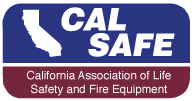Question:
Pressurized Flammable Liquids & Pressurized Gas Fires
In reviewing NFPA 10 and Title 19, Section 566. Page 34, it is clear that pressurized flammable gases and liquids are "to be considered a special hazard". Title 19 goes on to state that "it has been determined that a special nozzle design and rates of agent application are required to cope with such hazards". I can't find the specifics for the nozzle design or agent flow rates however. NFPA 10 section 5.5.1.1* is clearer. It states that for both pressurized and three-dimensional hazards, "large-capacity dry chemical extinguishers of 10 lbs or greater and having a discharge rate of 1 lb/sec shall be used. My question is this. Should we be installing High Flow Extinguishers at fuel stations, propane tanks, etc here in CA? I don't see a lot of 240 PSI extinguishers out there at these locations.
Answer
Don thank you for your inquiry. We applaud you for researching the matter to include looking into how NFPA10 addresses the issue. You are correct that Title 19 does state that only dry chemical agent should be used and adds as you have stated the need for special nozzle design and required rates of agent application for the hazard. As you have noted unlike NFPA10 there is not a reference to either the size or agent flow required nor is there a definition to the special nozzle design. Title 19 does state that the “selection of extinguishers for this type of hazard shall be made on the basis of recommendations by manufacturers of this specialized equipment.” Title 19 doesn’t define what it considers to be this “specialized equipment” nor which manufacturers have these extinguishers from which you can get a recommendation.
NFPA10 has more specific detail as to the capacity of the extinguisher and the nozzle flow rate. Many manufacturers have extinguishers that meet the NFPA 10 requirements that they recommend for this type application. By Title 19 referring back to the manufacturer rather than giving specific requires allows the specific application to be considered that may require something beyond the minimum requirements of NFPA 10.
As CALSAFE we are considering making a request for a formal interpretation from the OSFM to have a clearer direction.
Our recommendation in the meantime is to contact your extinguisher vendor representative and give them the specifics of your application for a recommendation to meet the Title 19 requirements. Whatever the recommendation it would be in your best interest from a liability standpoint to make sure that recommendation is equal to or greater than what the national standard (NFPA10) calls for.
